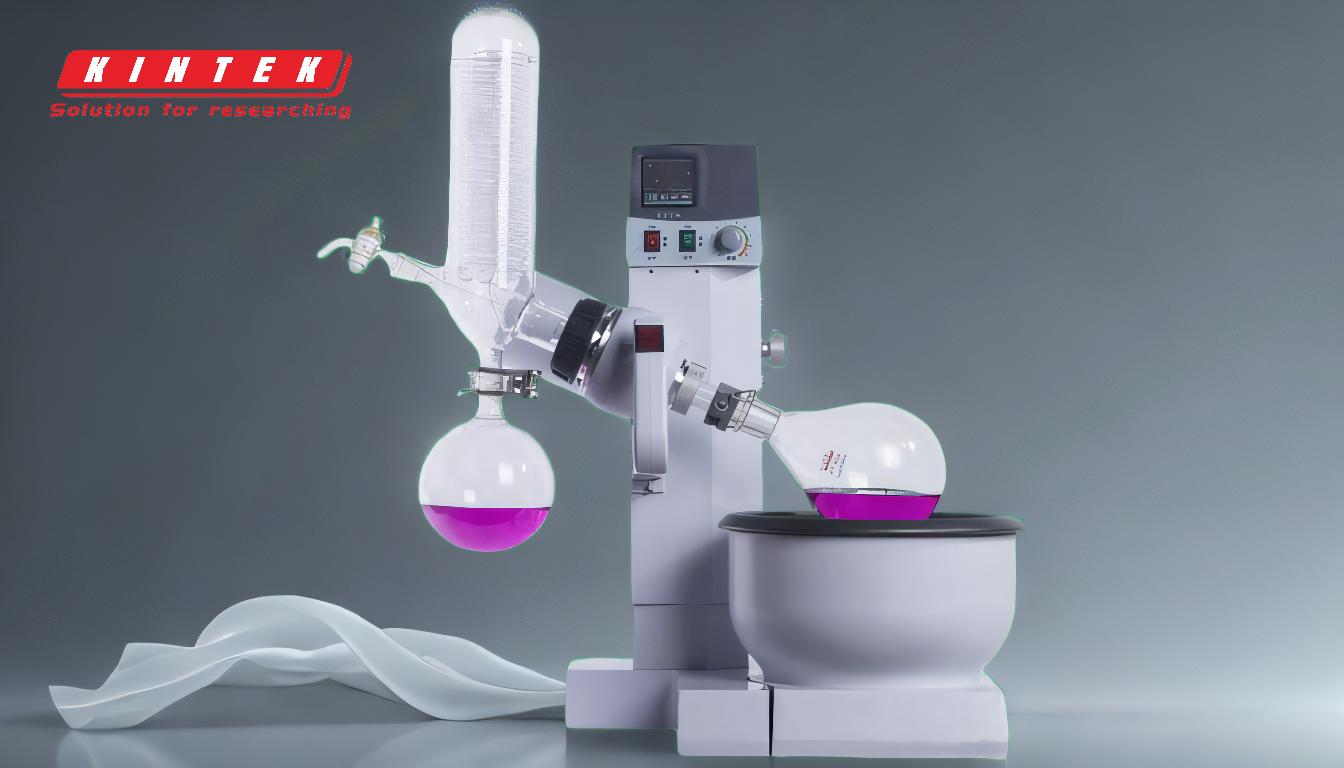The condenser in a rotary evaporator is a critical component responsible for cooling and condensing vaporized solvents produced during the evaporation process. It typically consists of a long glass tube filled with a cooling medium, such as cold water, ice, or liquid nitrogen, to achieve low temperatures. The condenser traps and re-liquefies the vapor into a pure liquid, which is then collected in a condensate-collecting flask. It is designed to prevent pressure build-up and ensure efficient condensation, often utilizing configurations like shell-and-coil or vertical orientation for optimal performance.
Key Points Explained:

-
Function of the Condenser:
- The primary role of the condenser is to cool and condense vaporized solvents into a liquid state. This process is essential for separating solvents from the sample in the rotary evaporator.
- By chilling the vapor, the condenser ensures that the solvent is efficiently collected and does not escape into the environment.
-
Design and Structure:
- The condenser is typically a long glass tube, often designed as a shell-and-coil type, which provides a large heat transfer area for efficient cooling.
- It is placed in a vertical orientation to facilitate the flow of condensed liquid into the collection flask.
-
Cooling Mechanism:
- The condenser uses cooling mediums such as cold water, ice, liquid nitrogen, or dry ice to achieve low temperatures. These substances absorb heat from the vapor, causing it to condense.
- The cooling medium is circulated through the condenser to maintain a consistent temperature and ensure continuous condensation.
-
Connection to the Vacuum System:
- The condenser is connected to the vacuum unit, which reduces pressure within the system. Lower pressure lowers the boiling point of the solvent, making it easier to evaporate and condense.
- This connection ensures that the vaporized solvent is efficiently drawn into the condenser for cooling.
-
Collection of Condensed Solvent:
- Once the vapor is condensed into a liquid, it flows into a condensate-collecting flask located at the bottom of the condenser.
- This flask is designed to safely store the collected solvent for further use or disposal.
-
Types of Condensers:
- Different configurations, such as single or double condensers, are available depending on the application and the volume of solvent being processed.
- Double condensers provide additional cooling capacity and are used for larger-scale operations or more volatile solvents.
-
Preventing Pressure Build-Up:
- The condenser’s design ensures that excessive uncondensed vapors do not cause pressure build-up within the system, which could lead to inefficiency or safety hazards.
- The shell-and-coil structure and vertical orientation help maintain a steady flow of vapor and condensed liquid.
-
Applications and Importance:
- The condenser is vital in applications such as solvent recovery, distillation, and concentration of samples in laboratories.
- Its efficiency directly impacts the overall performance of the rotary evaporator, making it a key component for achieving high-purity results.
By understanding these key points, a purchaser can evaluate the condenser's design, cooling capacity, and compatibility with their specific needs when selecting a rotary evaporator.
Summary Table:
| Key Aspect | Details |
|---|---|
| Function | Cools and condenses vaporized solvents into liquid for separation. |
| Design | Long glass tube, often shell-and-coil, with vertical orientation. |
| Cooling Mechanism | Uses cold water, ice, liquid nitrogen, or dry ice for low temperatures. |
| Vacuum Connection | Reduces pressure to lower boiling points for efficient condensation. |
| Condensate Collection | Collects condensed solvent in a flask for storage or disposal. |
| Types | Single or double condensers for varying solvent volumes and applications. |
| Pressure Prevention | Prevents pressure build-up with efficient vapor flow and condensation. |
| Applications | Solvent recovery, distillation, and sample concentration in labs. |
Need a rotary evaporator with an efficient condenser? Contact our experts today to find the perfect solution for your lab!













